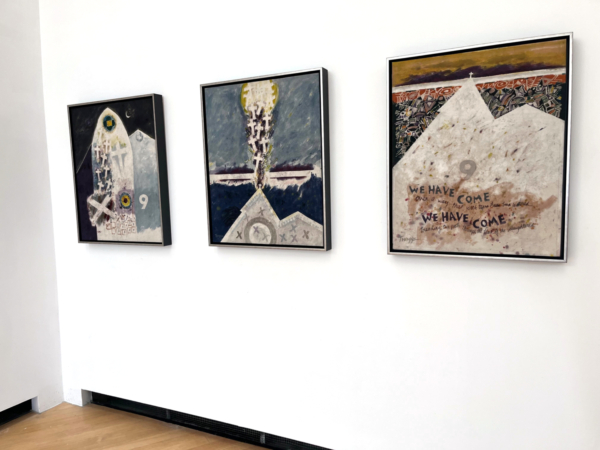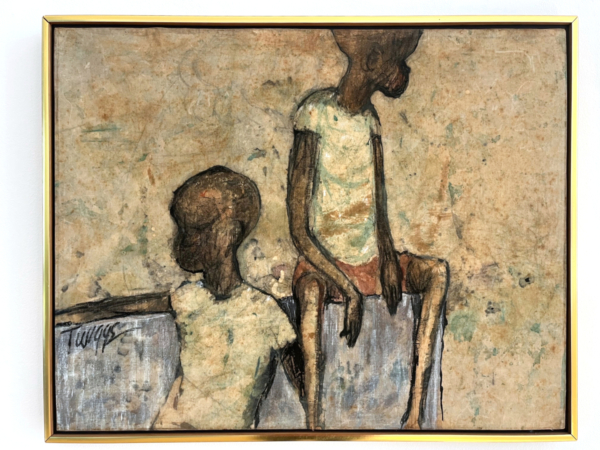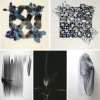Leo Twiggs
Symbols of the Time
African American Art Gallery

Artist Statement:
Every artist creates out of his own being from his own encounters with the world. I was born in the South and the things I remember: the scents, the people, the atmosphere, all shape the imagery I use in my paintings. I knew I wanted to get a special feeling in my work, and traditional medium did not provide the avenue for my ideas. I began to experiment with batik, dyes and wax on fabric, using the medium in innovative ways. Batik allows me to create spidery web-like patterns and mottled surfaces: an expression of aging, the struggle to survive–not just a world view, but time itself.
Segregation is the signature act of confinement, human beings separated from other human beings for nefarious reasons. For African Americans, “Jim Crow” codified and institutionalized confinement. The victims are often assigned to small crowded spaces with limited access to the freedoms others take for granted, mainly ghettos on the other side of town across the tracks. That crossing is also a place that intersects the bloodstained history of slavery– X marking the spot where someone was lynched or killed, 9, recalling people who were murdered in a church, a sign pointing the way to the segregated section and the cross, a hope of redemption. Confinement is more than separation, it nurtures feelings of inferiority and resentment that still lives.
But we must rise above it. My motto is: Don’t fail because of it, succeed in spite of it.
Leo Twiggs
May 19, 2019

Bio:
It is not news that the Civil War continues to resonate down the corridors of history. What is news—and remarkable—is the art of Leo Twiggs. He brings his prodigious talents to the subject and, quite simply, wakes us up.
Ken Burns, Filmmaker
October 27, 2008
Dr. Leo Twiggs was born in St. Steven, South Carolina in 1934. He received his Bachelors of Art from Claflin College in Orangeburg, South Carolina, and after studies at The Art Institute of Chicago, earned a Masters of Art degree from New York University and a Doctorate from the University of Georgia. In 1964 he joined the faculty of Claflin College, where he taught, and later chaired, for the next thirty-four years. His unique narrative batik paintings reflect subjects that reflect his journey as an African American man who lived most of his life in the American South, as well as current events and issues that have shaped our times. He often works in extended series, exploring his subjects with varied works executed of an extended period of time.
He has received a long list of honors and awards and his work has been widely exhibited and collected by institutions across the country. This December will mark the artist’s ninetieth birthday.


